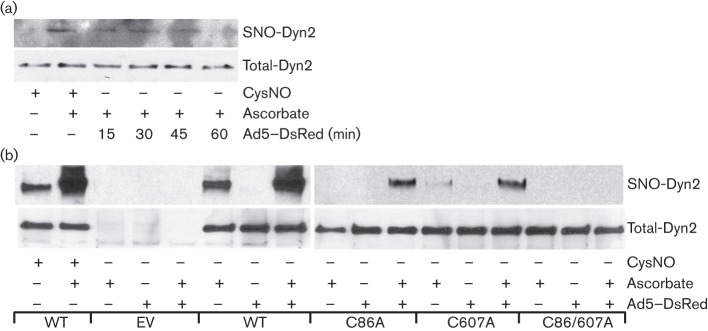Fig. 2.
Ad5–DsRed infection causes dynamin2 S-nitrosylation. (a) Ad5–DsRed infection promotes endogenous dynamin2 S-nitrosylation. BEC cells were infected with Ad5–DsRed for the indicated time and equal amounts of cell lysate were subjected to the biotin switch assay (top). (b) Ad5–DsRed infection promotes dynamin2 S-nitrosylation on C86 and C607 residues. BEC cells were transfected with cDNAs encoding HA-tagged dynamin2 [wild-type (WT), C86A, C607A, or C86/607A]. After 48 h, cells were mixed, or not, with Ad5–DsRed for 30 min. Cell lysates were harvested and subjected to the biotin switch method (top). For both panels, total cell lysates were immunoblotted with anti-dynamin2 antibody to show the equal protein loading (bottom), and lysate from cells treated with CysNO (100 µM) was used as a positive control. SNO-Dyn2, S-nitrosylated dynamin2.

